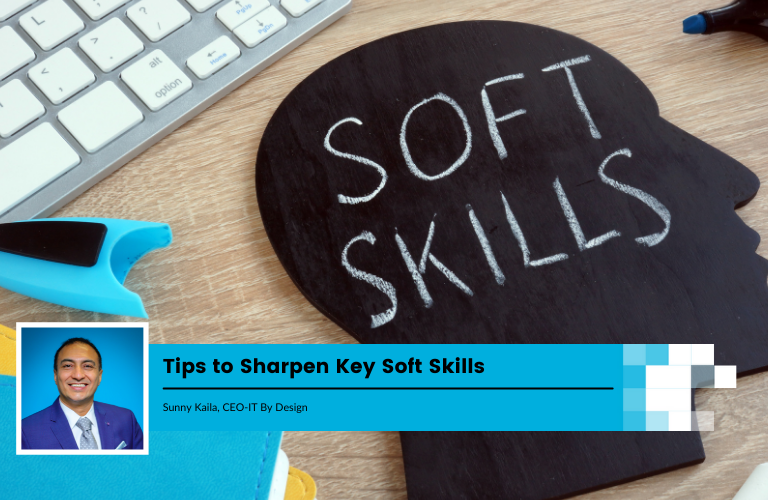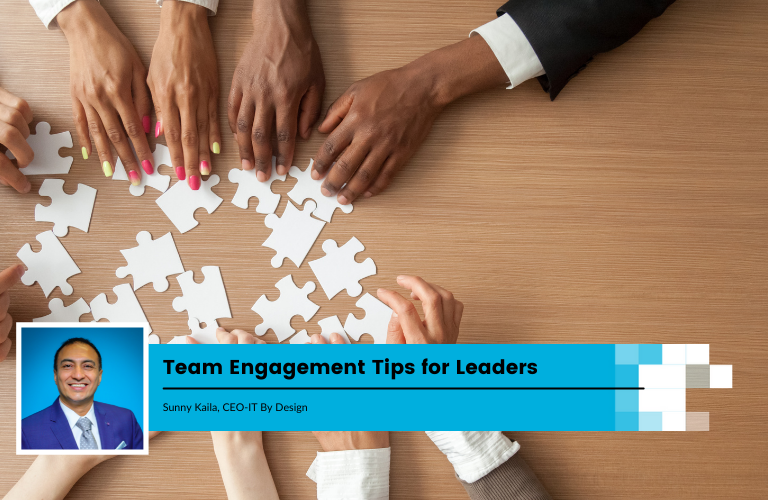Your team lead just called you into his office. He wants to discuss a long, critical mail he received from your client. At this moment, your challenge is helping your manager to understand the issue that upset the client and how you are resolving the problem—all in a calm and composed way. But wait … aren’t you an engineer? You do not fix emotions—you fix technical problems. However, no matter your role in a business, you will need the tools to manage emotions—both yours, those of your team lead, and even those of your client. Emotional intelligence (EI) is a skill that nearly everyone will need during their career—and it can be challenging.
Simplifying Emotional Intelligence
Emotional intelligence is your capacity to understand and manage your emotions. It spans across a spectrum starting with how you manage your own emotions to how you influence the emotions in others. To simplify this complex soft skill, let me break down each of its elements with a contextual definition.
Self-management: Your ability to manage your emotions in healthy ways, take initiative, follow through on commitments, and adapt to change.
Self-awareness: Your ability to recognize your own emotions.
Social awareness: Your capability to understand the emotions, needs, and concerns of others.
Relationship management: Your ability to develop and maintain good relationships.
As tech roles slowly shift from traditional support and operational roles to a more collaborative and strategic role, emotional intelligence has become critical. Understandably, integrating EI in your interactions at work can have powerful advantages. Having said that, it is not something all technical resources are good at. But this doesn’t mean it can’t be fostered.
Start with yourself
Self-awareness is one of the foundational components of emotional intelligence. How do your emotions influence how you respond to a stressful event at work? Do you find yourself impatient, angry, or annoyed often? What are some ways you can deal with these feelings effectively? Being honest with yourself about the answers to such questions can allow you to look for new ways to deal with difficult situations at work.
Self-awareness, your ability to recognize and understand your moods and emotions, should be practiced with a realistic self-assessment of what you’re capable of – your strengths and weaknesses. So, reflect on questions such as “Do I face difficulties in managing my impulse?” or “Am I good at adapting to change?” and “Do I tend to become defensive under pressure?”
Knowing yourself completely can be difficult and it’s almost impossible to look at yourself objectively. So, input from those who know you can be helpful. An important part of increasing your EI is to be comfortable with feedback. Instead of getting offended or defensive, take a few moments to understand where the critique is coming from and how it could positively affect your performance.
Name your emotions
Start naming your emotions as you feel them. “I feel rejected,” “I feel anxious,” or “I feel appreciated.” A great way to get an accurate gauge of yourself is to keep a journal. Documenting details such as these will make you more aware of your emotional triggers. Reflect on your observations and write down strategies for turning those negative reactions into positive responses.
Also, pay attention to how you behave when negative emotions hit you. Start by writing down how a conflict made you feel and how you dealt with it. Observe how you act when you’re experiencing certain emotions and how that affects your day-to-day work life. Managing your emotions becomes easier once you become more conscious of how you react to them.
Create the space
Being aware of your emotions is an important first step, but you also need to be able to manage your feelings. People who possess good EI don’t bottle things up but they also wait for appropriate ways to express their emotions rather than reacting impulsively. Emotions can overwhelm you in the heat of the moment. You can only make a calmer, more rational choice if you give yourself time to consider all of the possibilities.
Next, work on creating some space between a stressful event and your emotional response. Next time it happens, name your emotion (“I feel angry”) and intentionally create some space before you emotionally respond. The classic “Count to Three” method can be extremely helpful here. While addressing instances of conflict and emotional outbursts at a later stage, avoid using melodrama, complaining, negativity, dwelling on the past, selfishness, and being overly critical.
Understand what motivates you
See problems and setbacks as learning opportunities instead of failings. There are probably things about your job that you love and things that you dislike. Try focusing on the aspects of your job that you enjoy, such as the feeling of accomplishment you get when you resolve a big-ticket technical issue or achieve a higher CSAT. Identify those components of your job and take inspiration from them.
Name emotions in others to develop empathy
Practice identifying emotions in others. Observe their body language or tone of voice. Taking a moment to identify emotions in others will guide you towards empathy. Empathy is more than just recognizing how others are feeling. It also seeing things from the other person’s point of view.
Practice listening actively and generously during conversations and asking more questions to better understand others. Avoid vague statements and stick to “quick and to the point” messaging. And, improve your ability to persuade others through both logic and emotion. If you sense that your client is angry, you do not want to say “I know you are angry.” Instead, say something like “I understand this is a very frustrating situation. I am doing everything in my power to get this issue resolved as quickly as possible. I will keep you updated on progress.”
Final Thought: You can develop your emotional intelligence, but it will take persistent focus and practice. Rather than trying to master every skill at once, go slow and pick a single elemental skill. Work on these skills until they become habitual.
Emotional Intelligenceleadership lessons


